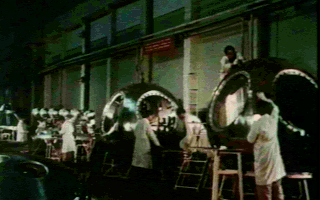
In it, you take charge of your country's space program as Director (US) or Designer (USSR). This is a simulation of the US-Soviet Space Race. The 60th anniversary of Gagarin's flight will be in 2021.Buzz Aldrin's Race Into Space! Rules of Play 12, 2018 by Contributor, Elizabeth Howell.Įditor's Note: This article was updated on Oct. Yuri's Night was founded in 2001 and attracts thousands of celebrants each year. The space community also commemorates Gagarin's achievement every year with Yuri's Night, a celebration that takes place on his launch date of April 12. The 60th anniversary of Gagarin's flight will be in 2021. Beyond that, Gagarin is often held up as an example of character and heroism to younger children in Russia.

Crews using the Soyuz spacecraft participate in a number of prelaunch traditions prior to climbing on to the spacecraft - such as urinating on the launch bus tires - to follow in the footsteps of Gagarin's historic flight.

Gagarin's importance in the Russian space program continues. The shuttle-Mir collaboration paved the way for NASA and the Russian space agency (Roscosmos) to become major partners in the International Space Station program, which first launched modules in 1998 and continues research today. Following that, NASA sent several space shuttle astronauts to Soviet/Russian space station Mir after the fall of the Soviet Union in 1991. The first joint U.S.-Soviet spaceflight was in 1975, called Apollo-Soyuz. and the Soviet Union began working together in their spaceflight endeavors. They also left medallions for other astronauts who lost their lives in space or while preparing for spaceflight. NASA's Apollo 11, the first mission to put people on the moon, landed in July 1969, and the crew left behind a commemorative medallion bearing Gagarin's name. He was survived by his wife, Valentina Ivanovna Goryacheva, and two daughters. On March 27, 1968, Gagarin was killed (along with another pilot) while test-piloting a MiG-15, a jet fighter aircraft. He continued to make test flights for the Air Force, however. Because the Soviets did not want to risk losing such an important public figure, they were hesitant about allowing Gagarin to return to space. When he returned home, Gagarin became a deputy of the Supreme Soviet of the Soviet Union (the highest legislative body in the Soviet Union) and was appointed commander of the Cosmonauts' Detachment. A national treasure, Gagarin traveled around the world to celebrate the historic Soviet achievement. A cheering crowd of hundreds of thousands of people greeted him in Red Square, a public plaza in Moscow. Upon his return to Earth, Gagarin was an international hero. Regardless, Gagarin still set the record as the first person to leave Earth's orbit and travel into space.

Soviet leaders indicated that Gagarin had touched down with the Vostok 1, and they did not reveal that he had ejected until 1971. In order for the mission to be counted as an official spaceflight, the Fédération Aéronautique Internationale (FAI), the governing body for aerospace records, had determined that the pilot must land with the spacecraft. About 4 miles (7 km) up, Gagarin ejected from the spacecraft and parachuted to Earth.

Vostok 1 had no engines to slow its re-entry and no way to land safely. Gagarin re-entered Earth's atmosphere, managing to maintain consciousness as he experienced forces up to eight times the pull of gravity during his descent. The spacecraft carried 10 days' worth of provisions in case the engines failed and Gagarin was required to wait for the orbit to naturally decay. Over the course of 108 minutes, Vostok 1 traveled around the Earth once, reaching a maximum height of 203 miles (327 kilometers).
Race into space manual manual#
If an emergency arose, Gagarin was supposed to receive an override code that would allow him to take manual control, but Sergei Korolev, chief designer of the Soviet space program, disregarded protocol and gave the code to the pilot prior to the flight. Because no one was certain how weightlessness would affect a pilot, the spherical capsule had little in the way of onboard controls the work was done either automatically or from the ground. Moscow time, the Vostok 1 spacecraft blasted off from the Soviets' launch site.


 0 kommentar(er)
0 kommentar(er)
